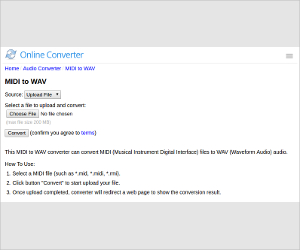

The top chooser allows you to slice at a variety of beat resolutions or according to the clip’s transients or Warp Markers. This offers a list of slicing divisions, as well as a chooser to select the Slicing Preset. When you select Slice to New MIDI track, you’ll be presented with a dialog box. The Drum Rack (see ‘Drum Racks’) provides an ideal environment for working with sliced files, and most of the setup happens automatically after you make a few choices: Instead, it simply splits the original audio into portions of time, regardless of the content. Slicing differs from the Convert commands below, in that it doesn’t analyze the musical context of your original audio. This command divides the audio into chunks which are assigned to single MIDI notes. When an audio clip is selected, four conversion commands are available in the Create Menu or the right-click(Win) / CTRL- click(Mac) context menu for the clip.Ĭontext Menu Commands For Converting Audio To MIDI. When you are done, you may export your job as a MIDI file: click the “File” menu, then click the “Export Annotation Layer” item, then in the dialog box, choose the file type “MIDI Files (*.mid)”.(Note: the features discussed in this chapter are not available in the Intro and Lite Editions.)Īlthough Live’s warping allows for audio files to be used much more flexibly than in traditional audio software, there are also a number of ways to extract musical information from audio clips and place it into MIDI clips, for additional creative possibilities. You may play/pause as you want, to hear both the original audio file, with the notes playing above it, as MIDI notes (it uses an embedded DSSI plug‑in as the MIDI synthesizer, so you don't have to bother to install and configure one). Draw horizontal lines above it, like in a piano‑roll editor. Take a look especially at what's red in the pitch spectrogram… this is typically the notes of the melody. The mouse cursor now should look like a cross, which will allow you to draw lines, just like in a piano‑roll view. Now click the “Layer” menu, and then click the “Add New Notes Layer” item. It will be useful, as you will see later. On the left of the pitch spectrogram, you can see a keyboard‑like ruler. This view shows the pitch (something close to classical spectrogram). You should see a new view below the waveform view (which, the latter, you can close if you wish). You should see a classical waveform graph appearing.Ĭlick the “Pane” menu, then click the “Add Melodic Range Spectrogram” item, then select “All Channels Mixed” sub‑menu (that's typically what you want, but you may work on separated left and right channels). Open Sonic Visualizer (use the Dash for this). Install Sonic Visualizer ( sonic-visualiser from Synaptic or the Software Center). Indirectly, Sonic Visualizer is able to at least help, but won't do it automatically, and you will have to be patient with the job it will requires.


 0 kommentar(er)
0 kommentar(er)
